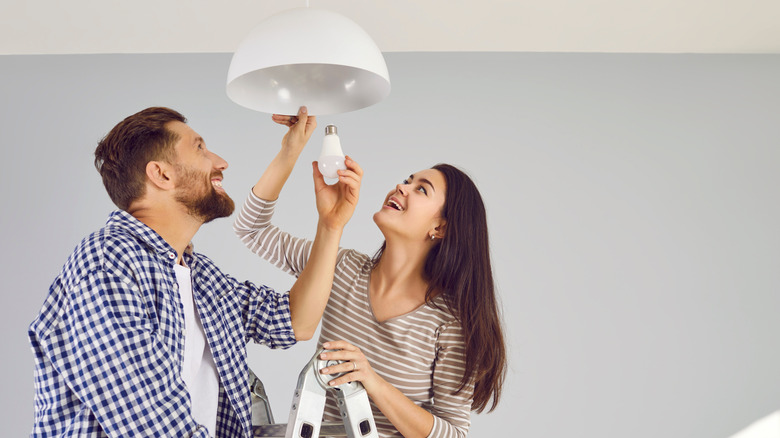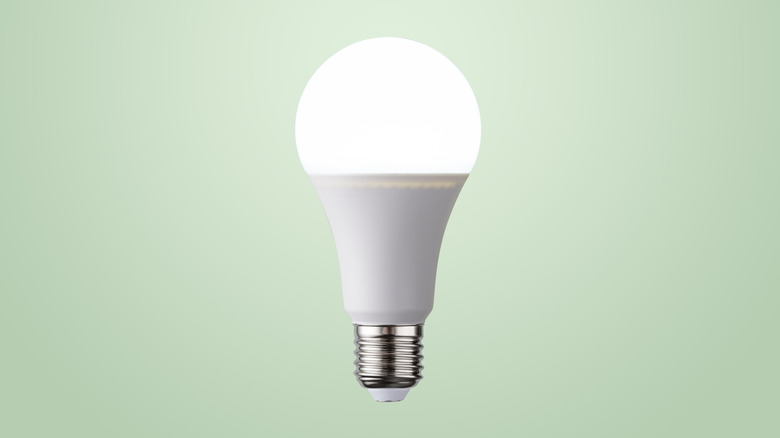What LED Bulb Wattage Is Equivalent To 100W?
We may receive a commission on purchases made from links.
Although incandescent light bulbs were banned back in August 2023 in the USA, most of us still think of old-school wattage when it comes to describing how bright a light bulb is. We can picture how bright a 100-watt light bulb is compared to a 60w or 40w one. That's why when you buy LED (light-emitting diode) bulbs, the manufacturers usually show the equivalent wattage much more prominently on the packaging than the real wattage. For example, these Amazon light bulbs have 100 watts in big letters on the front of the box and 14.5 watts in much smaller lettering beneath.
Generally, a 100-watt-equivalent LED light bulb is between 10 and 15 watts. 60-watt-equivalent LED bulbs are between 8 and 10 watts, and 40-watt-equivalent bulbs are around 6 to 8 watts. As LED technology improves, the wattages are becoming lower. The variations are due to differences in LED technology and how manufacturers measure lumen output. Using significantly less energy than traditional bulbs is the main reason that LED light bulbs are better for the environment. According to the U.S. Department of Energy, LED bulbs use up to 90% less energy and can last 25 times longer than incandescent bulbs, so they'll save you money too. However, when you're choosing LED light bulbs, wattage is only a small part of the story. The most important metric to consider is lumens.
What are lumens?
Unlike wattage, which is a measure of energy, a lumen is a measure of brightness. Because LED technology is far more efficient, current light bulbs can produce the same amount of light as their predecessors using far less energy. To match the brightness of a 100-watt incandescent bulb, you need an LED bulb that produces around 1,600 lumens. A 60-watt-equivalent bulb has an output of about 800 lumens, and a 40-watt-equivalent one has approximately 450 lumens. The lumen output is usually displayed on the box. If you're buying online, this info will be included in the specifications. For example, Amazon sellers list brightness in lumens under Product information.
There's one more specification you should check when you're buying light bulbs – the color temperature. This is measured in Kelvins, with 2000K being a warm color and 6000K a cool one. Bedroom and living room light bulbs usually fall between 2000K and 3000K. Higher numbers are more common in bathrooms and kitchens.
Thinking about brightness in terms of watts is now an old-fashioned assumption. We've moved on. Next time you're shopping for light bulbs, think about lumens and Kelvins when considering the right type of light for your living space.

